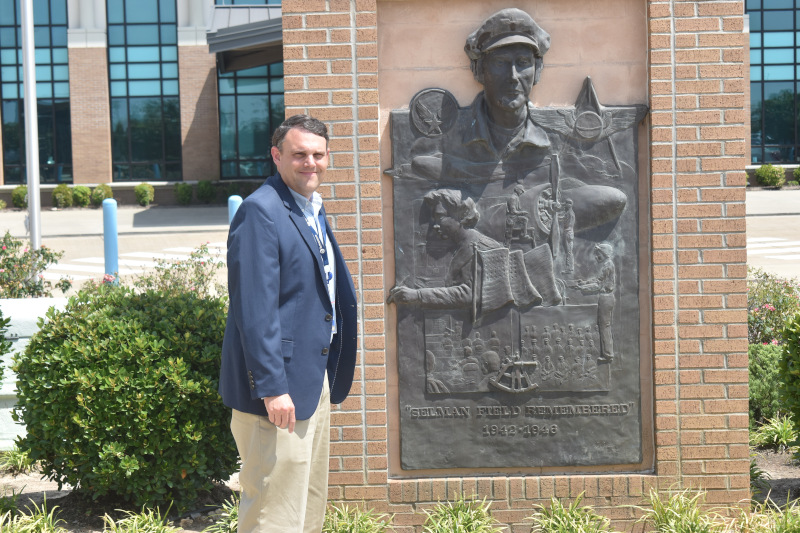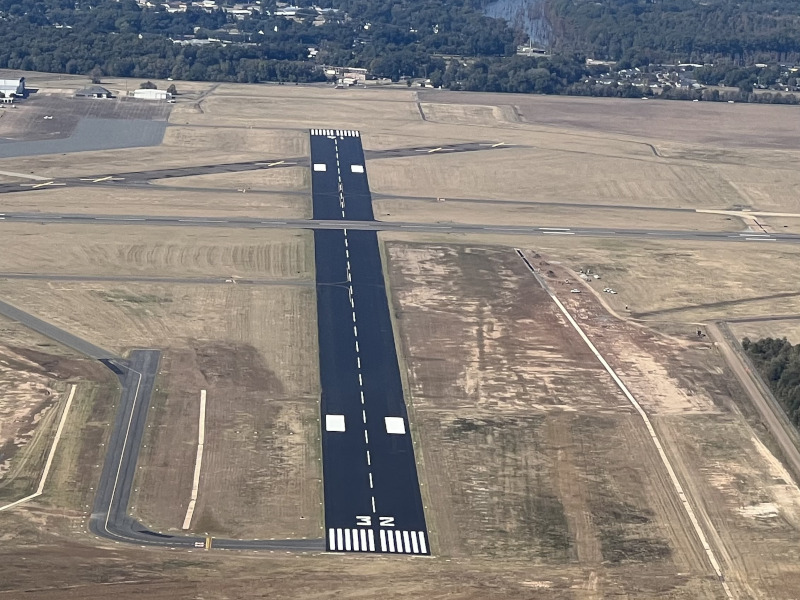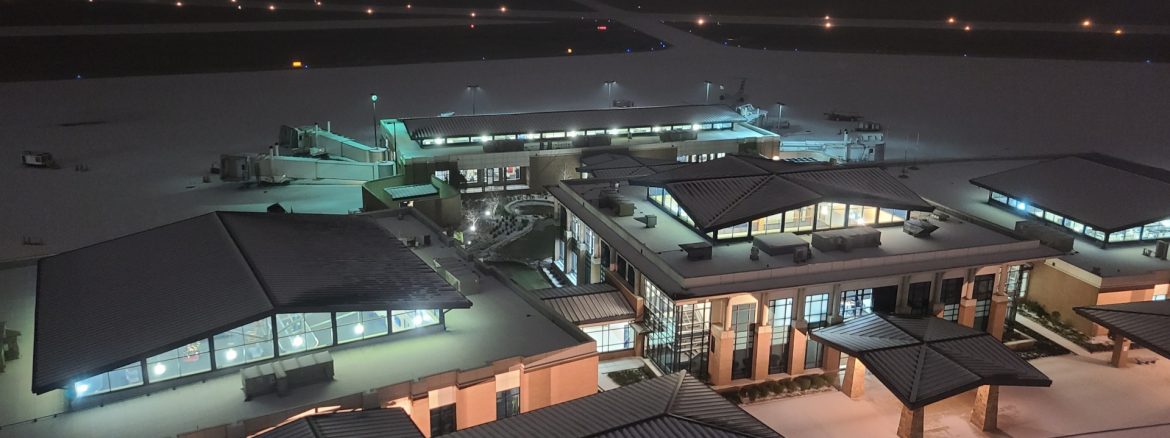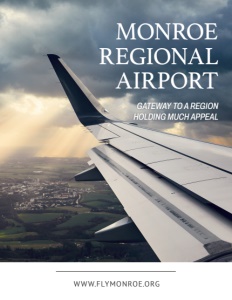Monroe Regional Airport
gateway to a region holding much appeal
With economic activity taking flight, Monroe Regional Airport welcomes increasing aviation traffic
America’s regional airports have always held a very strategic role in the nation’s aviation tapestry. Helping to offset traffic at larger airports, regional airports have become important hubs in their own right.
Despite this traditional need for regional players, there have been fewer regional flights available across the country coming out of the pandemic; some smaller airports have felt the economic pinch. Monroe Regional Airport however, while facing similar challenges, is keeping busy, setting the bar high for regional airports hoping to grab a piece of the regional aviation pie.
Situated three miles away from the mercantile district of downtown Monroe—a metro area of not quite a quarter of a million people, located three and a half hours northwest of Baton Rouge—Monroe Regional Airport is a hub of much activity, especially as America’s economy recovers from COVID, and the work of airports and other such commercial activities returns to normal.
We recently spoke with Charles Butcher, the airport’s director, and he told us more about it, giving us a bird’s eye view of this important economic asset in northern Louisiana.
There are two runways, says Butcher: primary and secondary. The airport features general-aviation (or GA)-based service. The FBO (or fixed-based operator) is Avflight Monroe.
American and Delta Airlines provide the airport with commercial passenger service, as Butcher points out, with the former serving the massive Dallas-Fort Worth Airport (one of the biggest such facilities on the planet), and the latter serving Atlanta. Delta airlines started in Monroe as a crop dusting service in the 1920’s. First-class service is available, he adds, for all the routes served by American and Delta, and the airlines use planes of 90 seats and 70-90 seats respectively.
“We’re happy to have those larger aircraft,” Butcher remarks, adding that each airline on average sees about three flights per day.
Then there’s the National Guard. It, too, has a large presence at Monroe Regional, as Butcher informs.
Talking of COVID, it had its adverse impacts on the American business community, and airports were especially hard hit. In the case of Monroe Regional, one casualty was the service of United Airlines, as Butcher notes ruefully.
“Some day,” he adds, “we hope to get that back.”
Still, on balance, the news is pretty good these days for Monroe Regional. Butcher happily reports that it’s seeing quite an uptick in general-aviation traffic. Airport traffic has managed to get back up to between 75 to 80 percent of where it was before COVID hit about three and a half years ago.
“I know we are on an upward trajectory,” he reveals, “and things have started to pick up.”
 Coping with the pilot shortage
Coping with the pilot shortage
Yet there are post-COVID challenges. There is still a dearth of pilots. That shortage is a thing with which Monroe Regional is continuing to grapple, as Butcher points out. Indeed, he adds, that was among the factors causing United’s departure: not enough pilots to fly to smaller markets.
The question remains paramount for the aviation industry as to what is needed to help alleviate this current problem. Train more pilots and airport managers, says Butcher. He cites Louisiana Tech University, just a half-hour’s drive from Monroe, and its degree offered in aviation management. LTU has a flight school and pilot training is offered at the LTU Pilot Career Center.
“They do a great job,” Butcher opines, adding that Monroe Regional is involved as well, with a majority of its interns being airfield management majors.The field is now wide open in more ways than one, as Butcher notes, because:“There’s just not much of a backlog of pilots right now.”
Expounding upon that theme, Butcher says that when COVID struck, many older pilots simply opted to go ahead and retire, and there wasn’t much of a pool of pilots from which the aviation industry could draw.
“They’re struggling now to get those positions filled,” he adds.
One thing that Butcher feels could potentially help assuage the pilot shortage crisis is increasing the retirement age by two years. In 2007, it was raised from 60 to 65 years of age. Increasing it yet again now to 67 would especially be a boon to regional airports. You can’t beat experience, and these smooth-sailing, seasoned veterans do have a lot of it.
“I think that we must try to get an extra couple of years out of our pilots,” he says, “and there are a lot of other countries that still do that: 67 or above. If you’re still capable of flying your aircraft, and you can pass your physical, I don’t see why you shouldn’t be able to, because you’ve got so much experience with those pilots! You’re way ahead of the game with someone more experienced than you are with someone just starting.”
Another option Butcher cites is the potential use of qualified foreign pilots.
“If we’ve got the spaces available, and we don’t have the people here to fill them,” he says, “I think we need to go elsewhere.”
Butcher notes that the pilot shortage has nothing at all to do with affecting safety. It’s merely that there are fewer flights available. He stresses that these are simply his own opinions and not at all necessarily reflective of the City of Monroe or any other entities.
Airport upgrades: gearing toward safety
There are several expansion and infrastructural projects at Monroe Regional. Among them is a planned improvement for the airfield, which is where most of the entitlement money is going, Butcher informs. As for the terminal, he adds, it’s about 10 years old and has some years left before any major expansion is planned.
Phase one of a major drainage project was recently completed. Louisiana is notoriously flat and marshy, of course, and Butcher mentions that being surrounded by creeks and canals makes for some significant drainage issues out on the airfield. The multi-year project will mean getting water off the airfield: truly a crucially important thing, as Butcher informs.
The secondary runway just got a 1,300-foot extension last year, he adds. This means a further option for aircraft that need to land in inclement weather and that sort of thing. It also gives the airlines more options for landings during construction projects on the primary runway, as Butcher points out.
“Now that’s not an issue,” he observes.
On the primary runway, an overlay and crack-sealing project was recently completed. New painting is another additional feature. Plus, both runways now have new and longer-lasting LED (light-emitting diode) lights.
“We’ve done a lot of improvements out there,” says Butcher, also citing re-doing the rotating beacon out on the runway, and being in the midst of efforts to get a new pilot-control lighting system.
Further, as he points out, the Monroe City Council just approved a new ARFF (or aircraft rescue and firefighting) truck. These are massive vehicles that can make the difference between life and death in emergencies at airports.
The airport’s current ARFF truck is 10 years old, and the Federal Aviation Administration agreed that this was a worthy project to pursue, as Butcher notes. Plus, the airport is getting a new sweeper truck. These big vehicles help runways look their best, and they’re critical to runway/taxiway maintenance.
Butcher adds that updating those taxiways is also important, per the FAA. Like countless regional airports across North America, Monroe Regional was originally constructed during World War II, so bringing it more up-to-date is important. Money matters, as Butcher admits, and so these and other such projects are being done necessarily gradually and in stages.
 Gateway to business
Gateway to business
More rentable business hangar space is on the near horizon, probably next year, as Butcher reveals.
“We have both aeronautical and non-aeronautical space here at the airport,” he says. “We’re lucky.”
Hypothetically, he adds, were a major company in need of airport space, they could talk to Monroe Regional. There is space outside the airport’s fencing that potentially could be developed. Relatedly, the City of Monroe has a nearby air industrial park (home to a Chase Bank, Brookshire’s Food and Pharmacy chain location, and other such big-name facilities), and Butcher serves on the park’s board.
There are many opportunities there as well, he adds. Also, Butcher extols Friday Ellis, the mayor of Monroe. Ellis is very development-oriented and quite keen on getting Monroe to grow, says Butcher, including land development and much more.
“We would love to have a new aviation business on the field,” he says, adding of the mayor, “but if it were something else, I know he would be in favor of that as well.”
Butcher stresses the airport is open for business; willing to talk with anyone to generate more positive growth. It means an optimistic, mutually beneficial approach: good for the airport; good for Monroe.
“We’re going to continue to push forward!” he declares.
AT A GLANCE
Monroe Regional Airport
What: Busy regional hub with operational upgrades in the pipeline
Where: three and a half hours northwest of Baton Rouge
Website: www.flymonroe.org





